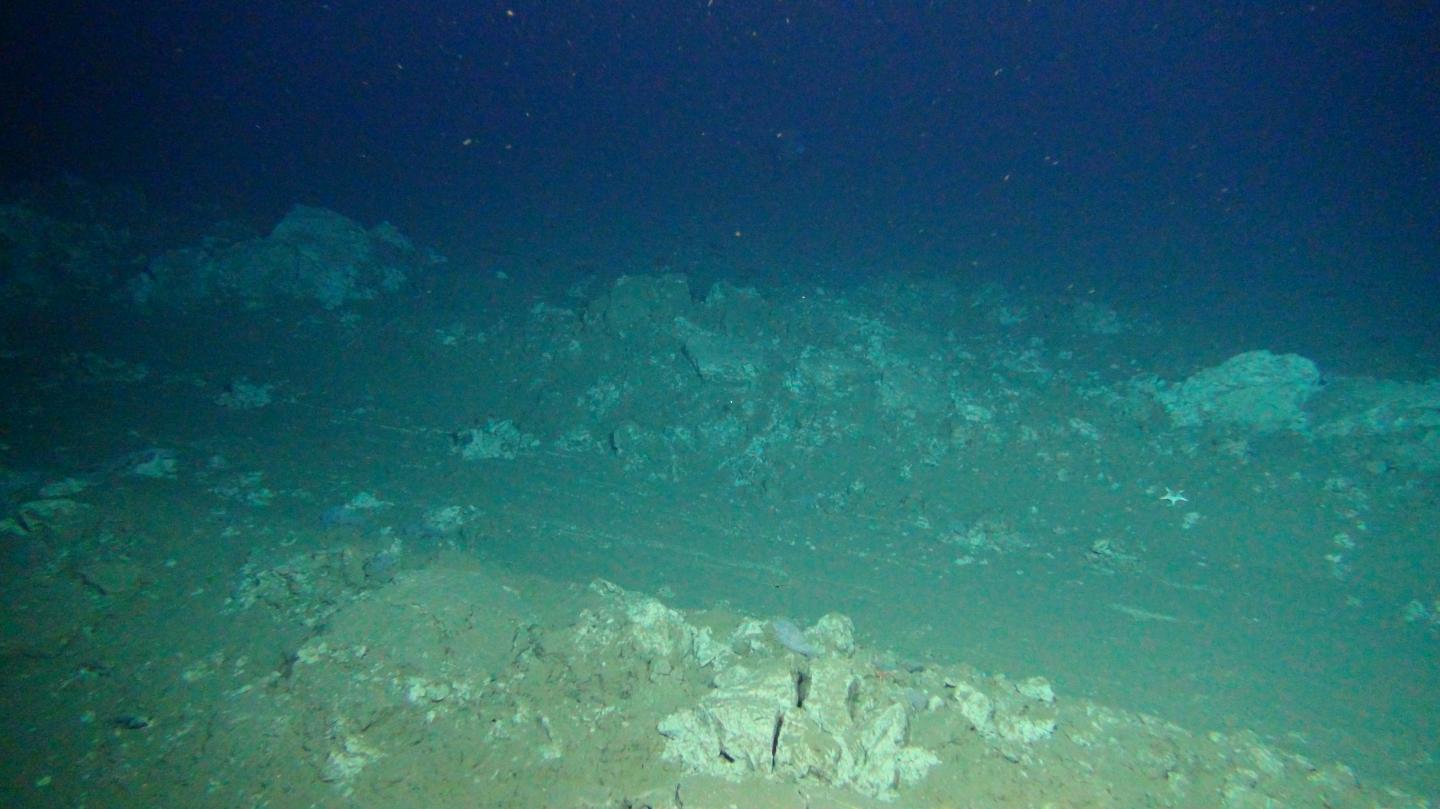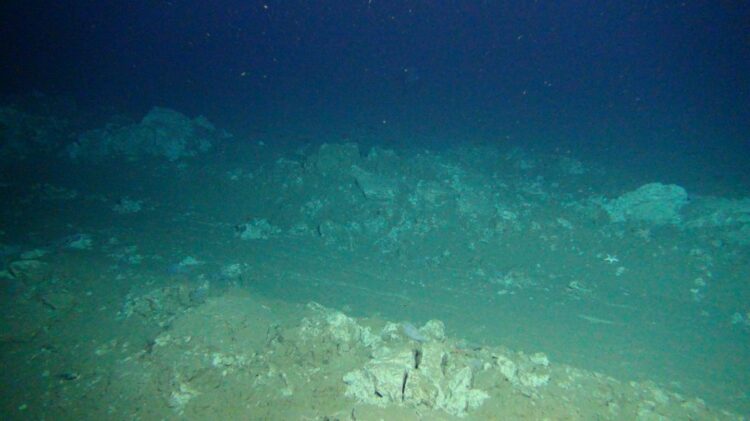Especially the microbial part of the carbon cycle is affected

Credit: ROV-Team/GEOMAR
The deep sea is far away and hard to envision. If imagined it seems like a cold and hostile place. However, this remote habitat is directly connected to our lives, as it forms an important part of the global carbon cycle. Also, the deep seafloor is, in many places, covered with polymetallic nodules and crusts that arouse economic interest. There is a lack of clear standards to regulate their mining and set binding thresholds for the impact on the organisms living in affected areas.
Mining can reduce microbial carbon cycling, while animals are less affected
An international team of scientists around Tanja Stratmann from the Max Planck Institute for Marine Microbiology in Bremen, Germany, and Utrecht University, the Netherlands, and Daniëlle de Jonge from Heriot-Watt University in Edinburgh, Scotland, has investigated the food web of the deep seafloor to see how it is affected by disturbances such as those caused by mining activities.
For this, the scientists travelled to the so-called DISCOL area in the tropical East Pacific, about 3000 kilometres off the coast of Peru. Back in 1989, German researchers had simulated mining-related disturbances in this manganese nodule field, 4000 metres under the surface of the ocean, by ploughing a 3.5 km wide area of seabed with a plough-harrow. “Even 26 years after the disturbance, the plough tracks are still there”, Stratmann described the site. Previous studies had shown that microbial abundance and density had undergone lasting changes in this area. “Now we wanted to find out what that meant for carbon cycling and the food web of this deep ocean habitat.”
“We looked at all different ecosystem components and on all levels, trying to find out how they work together as a team”, de Jonge explained who carried out the project as part of her Master’s Thesis at the NIOZ Royal Netherlands Institute for Sea Research and the University of Groningen, The Netherlands. The scientists quantified carbon fluxes between living and non-living compartments of the ecosystem and summed them up as a measure of the “ecological size” of the system.
They found significant long-term effects of the 1989 mining simulation experiment. The total throughput of carbon in the ecosystem was significantly reduced. “Especially the microbial part of the food web was heavily affected, much more than we expected”, said Stratmann. “Microbes are known for their fast growth rates, so you’d expect them to recover quickly. However, we found that carbon cycling in the so-called microbial loop was reduced by more than one third.”
The impact of the simulated mining activity on higher organisms was more variable. “Some animals seemed to do fine, others were still recovering from the disturbance. The diversity of the system was thus reduced”, said de Jonge. “Overall, carbon flow in this part of the food web was similar to or even higher than in unaffected areas.”
A mined seafloor might be more vulnerable to climate change
The simulated mining resulted in a shift in carbon sources for animals. Usually, small fauna feed on detritus and bacteria in the seafloor. However, in the disturbed areas, where bacterial densities were reduced, the fauna ate more detritus. The possible consequences of this will be part of de Jonge’s PhD Thesis, which she just started. “Future climate scenarios predict a decrease of the amount and quality of detritus reaching the seafloor. Thus this shift in diet will be especially interesting to investigate in view of climate change”, she looks forward to the upcoming work.
“You also have to consider that the disturbance caused by real deep-seabed mining will be much heavier than the one we’re looking at here”, she added. “Depending on the technology, it will probably remove the uppermost 15 centimeters of the sediment over a much larger area, thus multiplying the effect and substantially increasing recovery times.”
More info:
Polymetallic nodules and crusts cover many thousands of square kilometres of the world’s deep-sea floor. They contain mainly manganese and iron, but also the valuable metals nickel, cobalt and copper as well as some of the high-tech metals of the rare earths. Since these resources could become scarce on land in the future – for example, due to future needs for batteries, electromobility and digital technologies – marine deposits are economically very interesting. To date, there is no market-ready technology for deep-sea mining. However, it is already clear that interventions in the seabed have a massive and lasting impact on the affected areas. Studies have shown that many sessile inhabitants of the surface of the seafloor depend on the nodules as a substrate, and are still absent decades after a disturbance in the ecosystem. Also, effects on animals living in the seabed have been proven.
###
Media Contact
Dr. Tanja Stratmann
[email protected]
Original Source
https:/
Related Journal Article
http://dx.





